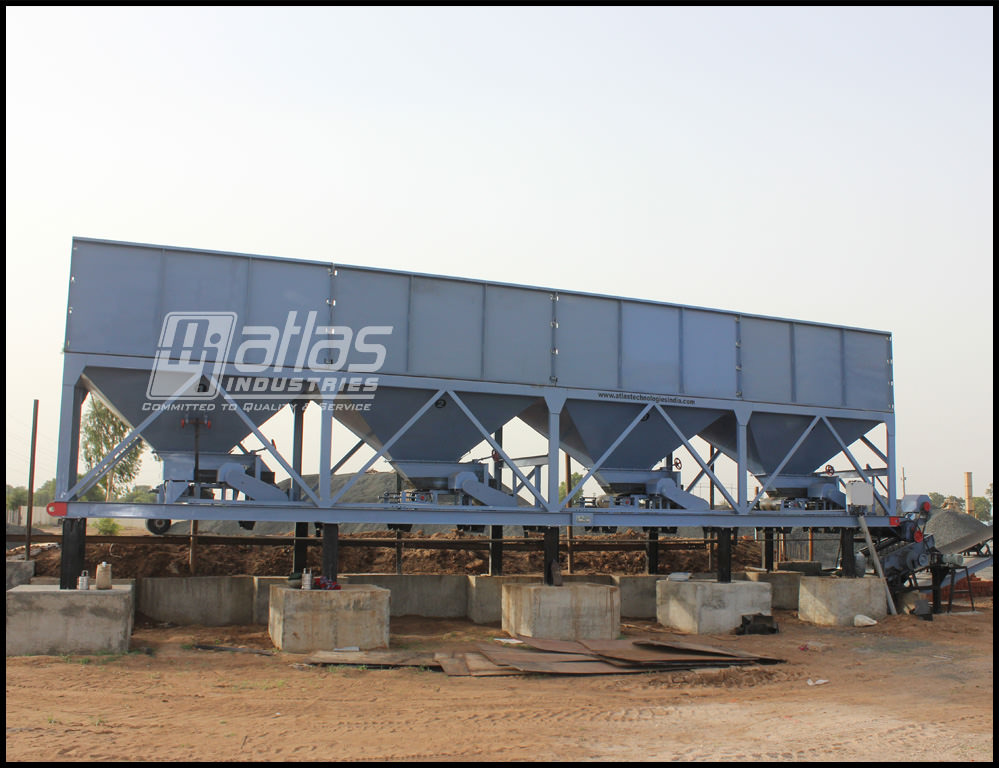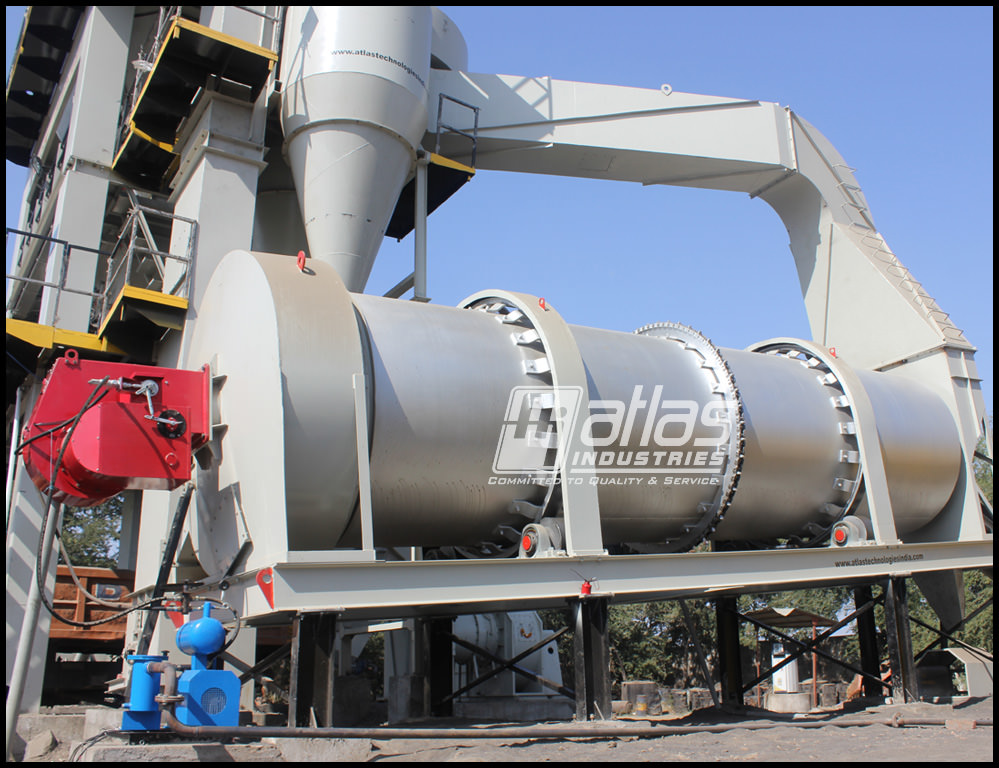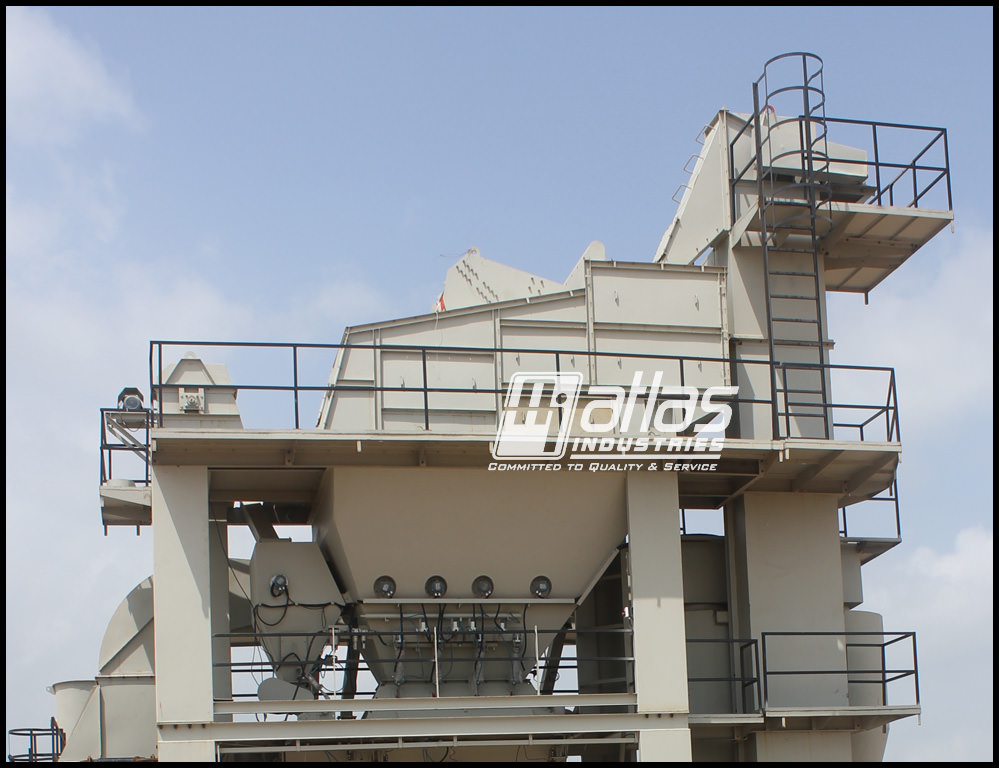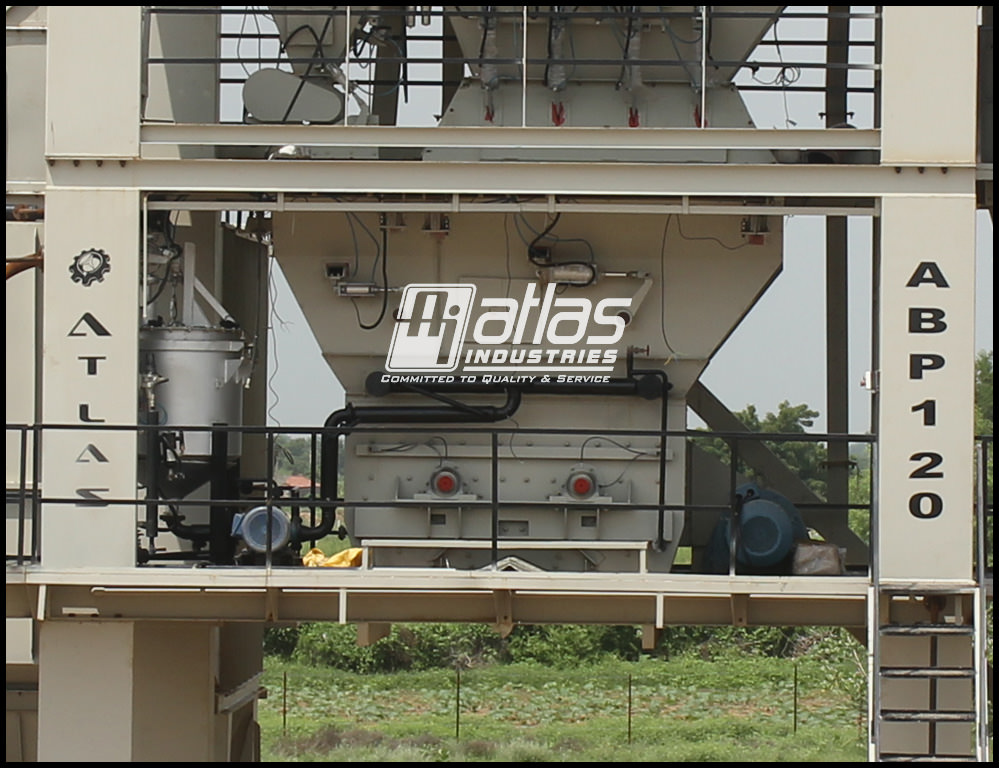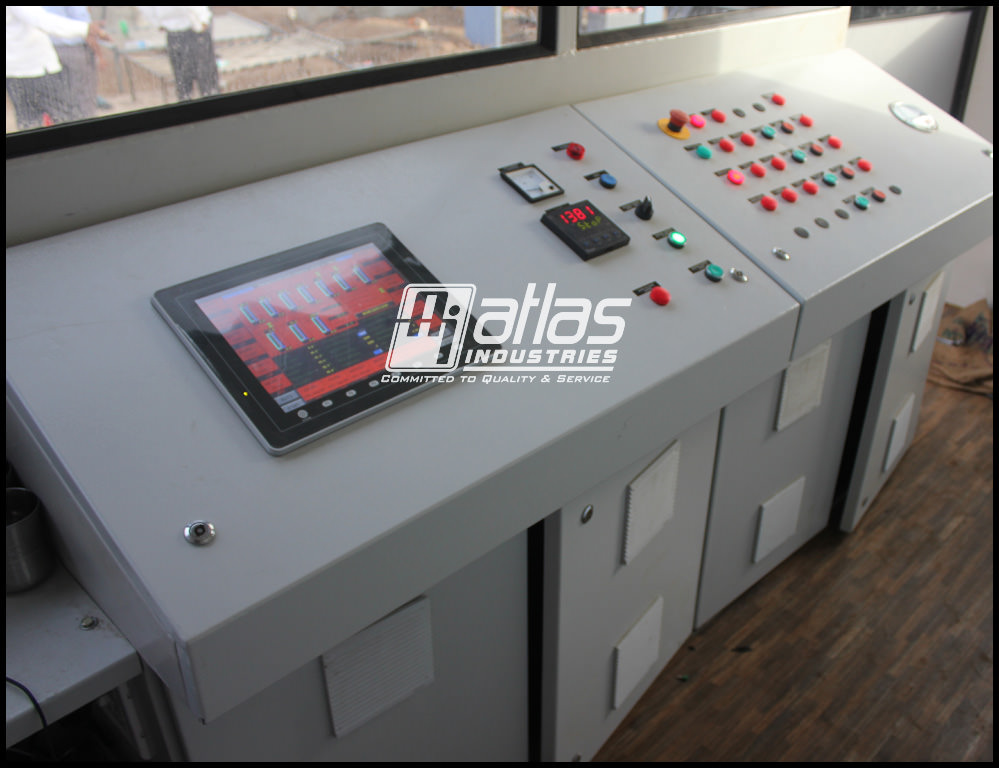The asphalt mixing plant is key equipment for any road construction company. Any asphalt batch mix plant operation has many functions. This makes them a bit complicated compared to the drum types. This post will try and highlight the asphalt batch mix plant operation in the simplest manner.
Working of any asphalt batching plant is dependent on four main functions:
- Drying and heating the aggregates.
- Weighing the aggregates, bitumen and binder material.
- Mix the bitumen, binder with aggregates.
- Discharging the hot mix asphalt.
Types of Asphalt Plants:
We can categories the mixing plants as batch mix and drum mix plants. Asphalt Batch plants: These plants produce hot mix asphalt in a series of batches. Drum mix asphalt plant: These plants produce hot mix asphalt in a continuous process. These are usually drum mix plants and counterflow plants.
The difference here is not only in the mode of production. But also the different qualities of hot mix asphalt that each equipment produces. It is also possible to alter and use this equipment for production of hot mix asphalt using recycled material. Both batch type and drum type plants have variations in them that allow addition of RAP (Reclaimed asphalt pavement).
The components of a standard asphalt batch mix plant are:
- Cold aggregate feeder bins to meter and supply the aggregate to the dryer drum.
- Conveyor to take the cold aggregates from the feeder and supply the same to the dryer drum.
- Drying drum with burner for heating the aggregates.
- Elevator for feeding the hot aggregates to the vibrating screen after drying.
- Vibrating screens to separate the hot aggregates into different compartment as per the sizes
- Hot bins to hold the hot aggregates before weighing
- Filler storage and weighing system
- Bitumen storage and weighing system
- Aggregate weighing system
- Pug mill mixing unit
- Dry dust collector
- Bag filter
- Control system
LAYOUT OF TYPICAL BATCH PLANT
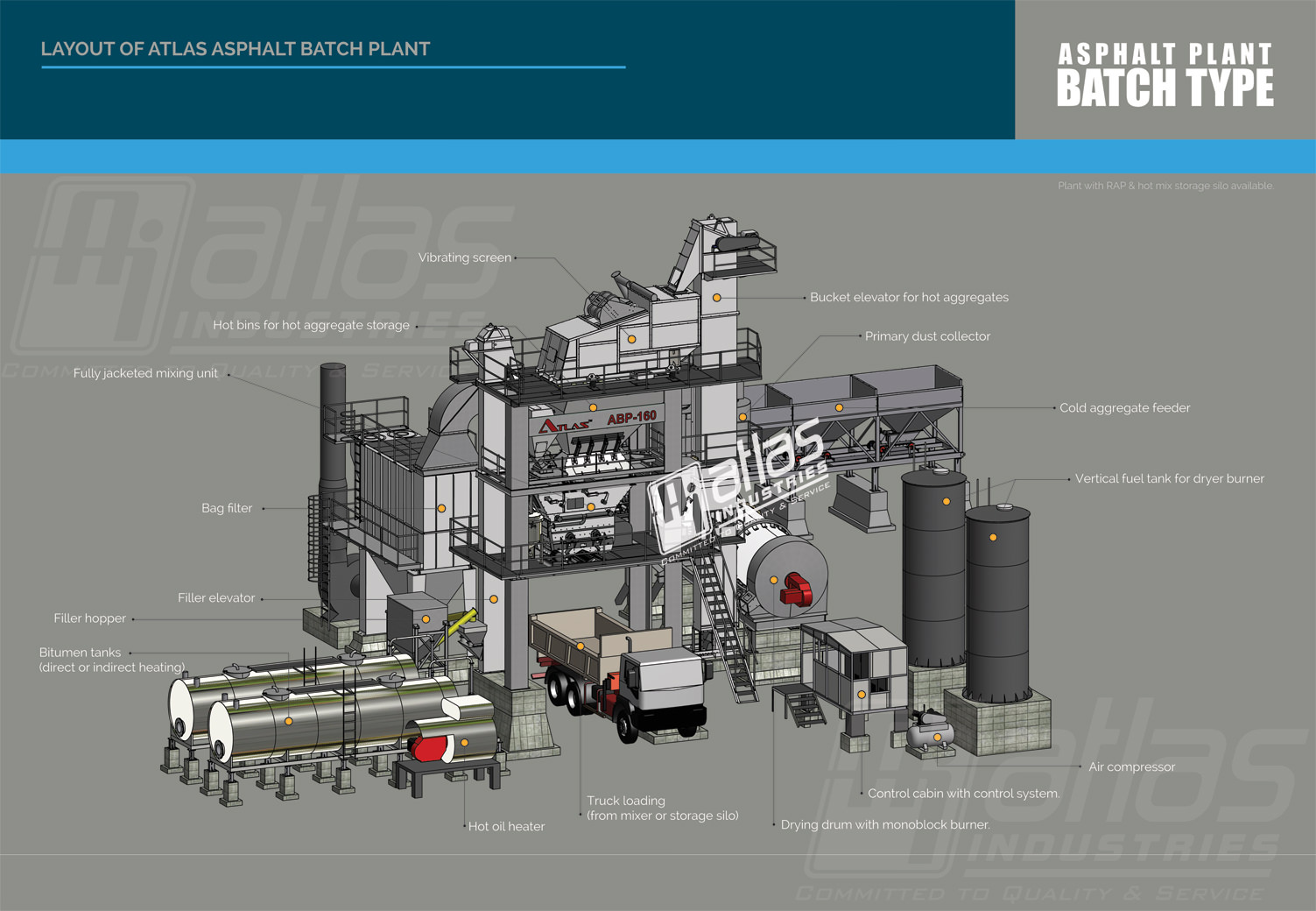
Batching plants get their name because of their ability to produce hot mix asphalt in batches. The size of these plants will depend and vary depending on the capacity of each batch. Batching plants are in demand because of their ability to switch between different recipes. This makes them ideal choice for customers who want accurate equipment which can work endlessly and switch between different recipes. This facility of this machine is a strong advantage over the traditional drum mixers that are available for sale today.
Asphalt Batch Mix Plant Working:
Working of a asphalt batch plant will include heating and weighing of aggregates, heating and weighing of bitumen, weighing of filler material and in the end mixing aggregates, bitumen and filler material to produce hot mix asphalt. The percentage of each item can vary depending on the mix material recipe set in the control panel. The size and percentage of the aggregates will also vary depending on the recipe selected.
In cases where reclaimed asphalt needs to be added, there is provision to add the same in the mixing unit of the hot mix plant. Before addition in the mixing unit, the RAP material is proportioned. Depending on your need, asphalt mixing plant manufacturers should be able to provide you with stationary or mobile asphalt plant.
There are few operations which are common to all asphalt batching plants:
- Cold aggregate storage and feeding
- Drying and heating of aggregates.
- Screening and storage of hot aggregates
- Storage and heating of bitumen and filler material
- Measuring and mixing of bitumen, aggregate and filler material
- Loading of finished asphalt mix material
- Control of all the operations of the plant by a control panel.
Apart from this there can also be option to add reclaimed asphalt in the mix.
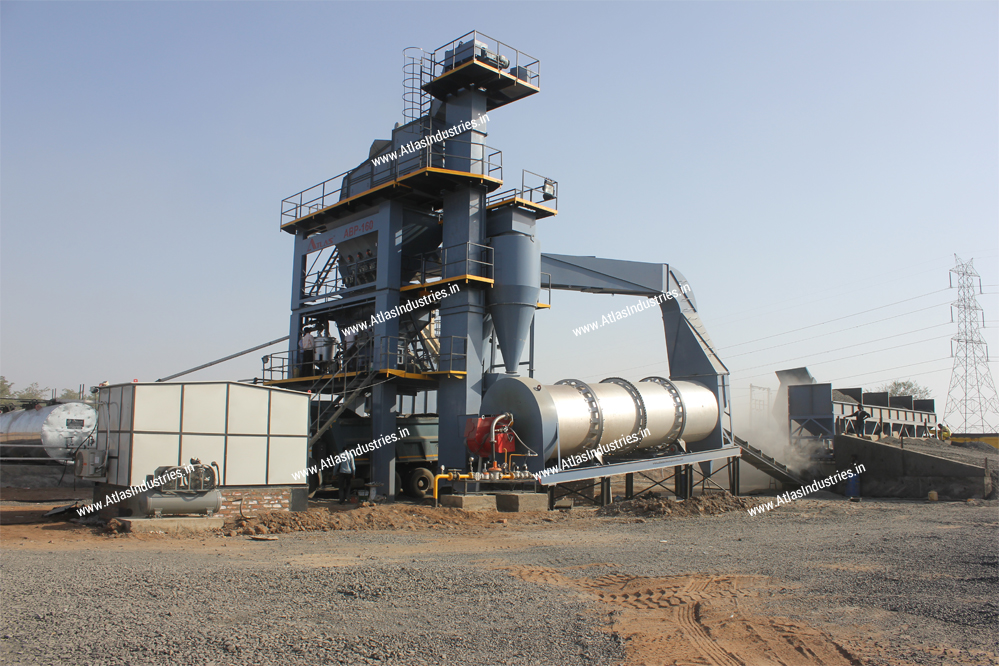
The above figure shows the major components of a typical asphalt mixing plant batch type. The detailed component wise is in the sections that follow.
The cold aggregates need to be stored in stockpiles near the plant site for ease of access. They should be obtained from storage or stockpiles, and fed into the cold aggregate feeder bins. The aggregates are fed into the bins according to their sizes. For eg. Feeding of 10 mm, 20 mm, and 40 mm of aggregates has to be done in separate bins. The bins then send these aggregates in a controlled manner to the drying unit. This has to be done via a conveyor or bucket elevator. The drying drum is a rotating unit that comes with a burner unit enabling the heating process of the aggregates. This helps in removing the moisture content in the same.
Once the aggregates get heated, they pass through a bucket elevator into a vibrating screen. This screening unit is many decked depending on the number of aggregates used. The screening unit will help separate the aggregates as per their sizes and store them in different compartments. The storage compartments are hot bins that will store the aggregates before weighing. Bitumen is filled in separate tanks and heated. The pumping station allows the pumping bitumen to the weigh tanks. After weighing the bitumen, it needs to be pumped into the mixing unit for mixing with aggregates. In the same way, the filler material needs to be stored and weighed before addition to the mixing unit. Proportioned aggregates, bitumen, filler material and reclaimed asphalt payment material are then mixed into the mixer. The homogeneous mixing in the mixer is for a fixed time. The result is hot mix asphalt, which is loaded into trucks or stored in silos for delivery to paving sites.
- Unheated and raw aggregates have to be stored in different bins as per their sizes. There are individual cold feeder gates which control the flow of aggregates.
- They are then transferred to the drying drum via a belt or elevator.
- In the drying drum, the burner dries and heats the aggregates.
- In most of the hot mix plants, there is a primary dust collector. This unit settles down the heavy dust particles.
- The dust collector works in sync with a secondary pollution control unit which is a bag filter. In some cases, plant with venture type wet dust collectors are also available.
- Bucket elevator transfers the heated aggregates to the top of the tower unit. On top of the tower unit is the screening unit.
- The screening unit is multiple layered. When aggregates pass they get treated to screening effect. They get separated based on their sizes.
- There are separate hot bins for storage of each type of aggregates. This is a temporary storage before the aggregates are weighed.
- After weighing the aggregates get discharged into the mixing unit. Here they get mixed with bitumen and filler material.
- Bitumen tanks store the bitumen. Bitumen tanks also heat the bitumen to keep it in liquid state for free flowing. Pumping station of bitumen pumps it to the weighing bucket. This bucket weighs it before addition into the mixer. Same principal is applied for the filler material also. Filler is in separate container and pumped to its weighing bucket before addition into the mixing unit.
- After mixing, the material is discharged into waiting trucks or storage silos.
- Control panel controls all the operations of the plant.
Aggregate Storage And Cold Feeding
The process of handling and storage of cold feed of aggregates in a batch plant is like the drum mixers. Usually, we have aggregates of different sizes in different quantities in a mix recipe. Variations in these make different proportions or different recipes of hot mix asphalt. Different bins of the feeder store the aggregates in different bins. It is important that the bins are kept full most of the time because they will be used.
Enough material should be available at all times. This material should flow uninterrupted. It is also important that the bins are filled with care. Some of the bins may empty fast compared to other bins and such bins need to be filled again and again. Imagine that your mix design has a higher percentage of, say, 20 mm of aggregates.
In this case, this 20 mm of aggregates will be used faster compared to others. Improper feeding will cause some of the bins to overflow. Huge variations in the quantity of specific aggregates at the cold feed can cause considerable changes in the temperature of the aggregates leaving the drying drum. Excessive feeding of the aggregates will overload the dryer or bucket elevator or the vibrating screen. Variations in the aggregate sizes will also affect the moisture content in the final hot mix asphalt.
These are the issues that add to the nonuniformity of the final asphalt, which is not good. Hence, it becomes important for any asphalt plant manufacturers to have feeder bins with empty bin indicators and moisture indicators. This will help in controlling the feeding process.
It also becomes important to control the proportions of aggregates leaving the aggregate feeders. This will help in controlling the degradation. It becomes critical to ensure that the materials flow in desired proportions because it may disrupt the mixed material at a later stage.
Aggregate drying and heating
As soon as the aggregates leave the feeder units, they are transferred to the dryer drum. The drum is rotating, thus transferring the aggregates from one end to the other. During this course of the transfer, the aggregates are thoroughly heated and their temperature is raised to the desired level.
The burner makes up for the hot temperature in the closed dryer chamber, removing the moisture from the same. It is important to control the temperature inside the dryer. Temperature indicators play an important role. The temperature has to be checked on a regular basis. Moisture checks are an important part here.
- Dryer Operation
Asphalt mixing plant manufacturers manufacture conventional dryers, which are revolving cylinder drums. They range from 5 to 10 feet in diameter and 20 to 40 feet in length. The burner unit is the main component of any dryer. The design of the dryer drum is important and it should be in sync with the burner to get the best heating with the least fuel consumption. The burner works with diesel or other liquid fuel.
Burners can also use natural gas or coal. Diesel burners have fuel combustion mechanisms using diesel and air. blower fan blows the air required for combustion. The drum comes with flights that have different mechanisms for lifting and heating the aggregates.
The dryer drum is inclined. Aggregates enter the higher end of the drum and exit the other lower end of the drum. Certain factors, like the slope of the drum, diameter, length, flights, and rotation speed of the drum, will determine the time aggregates spend inside. The more time aggregates spend, the more chances that they will be heated.
A proper air-to-fuel ratio has to be maintained inside the drum for best results. The blower pumps the air inside the drum. And it will take the burner flame far off so that the aggregates can be evenly treated for heat. This gives the best results and efficient removal of moisture. If the air is less, the quantity of oil will be greater, leading to incomplete combustion of fuel. This can also leave an oily coating on the aggregates and is not good for the final asphalt mixture.
Asphalt plant manufacturers usually design the dryer drum to work efficiently (without a drop in production) with aggregates that have up to 5% moisture content. It does not mean that the dryer design is a failure for aggregates that have higher moisture content. However, the calculation of the dryer drum is dependent on 5% moisture content. If the aggregate moisture content is high, fewer aggregates have to be fed to the dryer.
Once this is done, there will be a drop in the capacity of the dryer drum thus reducing the output of the asphalt mixer. One of the most concerning factors for any asphalt plant buyer is the fuel consumption of the dryer drum. It is one of the most expensive operations and also a critical factor that can make a huge difference. The capacity of the equipment depends on the efficiency of the drying drum.
Screening and storage of hot aggregates
Screening is one of the most important factors that determine the success of any asphalt mixer. Screening here is important because it allows separating the aggregates depending on the sizes. Once the aggregates are dried, they are transferred to the multi-deck screening unit.
A bucket elevator system which is enclosed does this task efficiently. During the gradation process, the aggregates have to pass through multiple layers of the screens. This process will help separate the aggregates into various fractions and deposit the same in different hot bins. This unit forms the topmost part of the tower unit of the batch mixer.
- Screening unit
It includes a set of screens that are different in sieve sizes. These screens are located one above the other. The topmost is the scalping screen, which rejects the oversized material. This unit is followed by other screens that are below this screen. The sieve sizes of the screens decrease from top to bottom.
The topmost screen will always have the biggest sieve size so that the smaller particles can make it through. At the base is the screen for sand, which will have the smallest clearance. The main purpose of the screens is to separate the aggregates into different compartments known as hot bins.
The size of the screening area should be large because, at a time, a large quantity of aggregates will be passing over the screens. It is also important to clean the screens and keep them in good condition. The handling capacity of the screen should complement the feeding capacity, dryer size, and pug mill capacity.
If too many aggregates are fed, the aggregates just ride over the screens and come out from the overflow section, resulting in a waste of energy. If the screens are worn out, the large opening will result in the larger particles getting stuck in the screens, making it inefficient or making things easy for slightly bigger aggregates to pass.
- Hot Bins
Hot bins are just below the screening unit. The number and capacity of the hot bins is dependent on the size of the screens and the capacity of the plant. Hot bins store the separated aggregates in separate chambers as per their sizes. The size of the hot bins has to be large enough to hold material of each size. The partitions have to be high and free from holes and also prevent the mixing of the separate aggregates. Hot bins are also provided with level indications, which send a message when a bin gets full.
Storage and heating of bitumen and filler material
Storage of bitumen is an important aspect of any asphalt batch plant. It is important that regular storage of bitumen is there at the plant at all times. Bitumen tanks are designed for the storage and heating of bitumen so that it stays in a liquid state and flows freely. Asphalt storage and supply tanks are fully insulated to prevent the loss of heat. Heating of bitumen can be done directly or indirectly. Different capacities of bitumen tanks are made available as per the request of a customer. A suitable capacity pumping station will pump the bitumen to the weigh tanks for weighing.
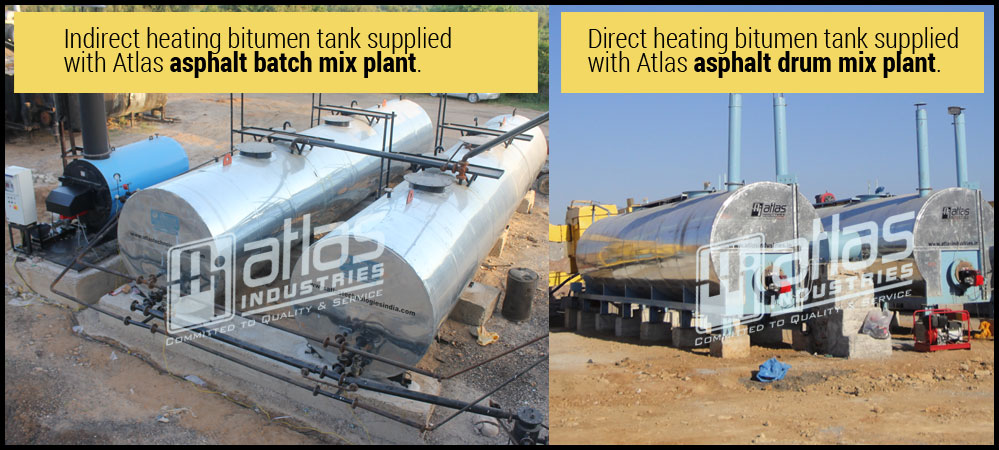
The filler material can be made to add to the mixing unit. There is also a provision to add the dust from the bag filter back into the mixing unit. separate weighing unit for filler material is also provided.
Measuring and mixing of binder, aggregate, and recycled materials
Since the aggregates are stored in separate compartments, they are weighed separately as required before addition into the pug mill mixer. Bitumen is weighed separately before it is added to be mixed along with the aggregates. The same principle applies to the filler material. As soon as the bitumen is weighed, it is introduced in the pug mill unit for weighing. It is important to inspect the binder weigh buckets and check them for accuracy every day. If there is a small amount of bitumen getting stuck from the last day’s operation, it can add to the total weight of the bucket. This amount of binder that will be added to the pug mill unit will be lesser than required.
The addition of recycled material is possible, it is transferred to its weighing scale and then introduced into the pug mill mixing unit.
The pug mill mixer is the mixing zone where the aggregates, bitumen, and filler material are mixed thoroughly for a fixed period of time. pug mill mixer consists of two horizontal shafts that are parallel to each other. There are pedal arms and tips which are fitted on these shafts. When the shaft rotates, the arms and tips rotate, resulting in homogeneous mixing.
This helps to produce quality hot mix asphalt. These arms and tips are replaceable when worn out. The inner lining of the pug mill mixer is also replaceable when worn out. Most of the asphalt batch plant manufacturers provide pug mill mixers with jacketing hot oil so as to keep the unit hot at all times.
Loading of finished asphalt mix material
The final stage in the operation of the asphalt batch mix plant is the discharge of the hot mix asphalt into waiting trucks or storage silos. Storage silos can be of different capacities as per the requirement of the customer. Most of the manufacturers of asphalt batch mixers offer storage silos that are insulated so that the temperature is maintained for a long period.
Control Of All Operations Of The Asphalt Plant
The control panel is the heart of the unit that controls the entire operation of the plant from a single place. The control panel will allow the addition and deletion of mixed material recipes. It also displays all the important parameters in the panel.
The modern asphalt batch mixers are equipped with sophisticated controls that allow smooth and error-free operation from a single place. Plant status and error-solving mechanisms are also possible. Nowadays it is also possible to print the batch reports from the control panel.
A batch mix asphalt plant will mix aggregates, bitumen, and binder material in a central mixer in fixed proportions and at set temperatures to produce hot mix asphalt. A batch mix plant produces hot mix asphalt in different batch sizes.
A batch plant has many parts, the main component being its tower unit. The Tower unit consists of a screening unit, hot bins, and a mixing unit. All the components including the feeder and drum unit are controlled by a central control system of the batch mix plant.
A drum hot mix continuous plant does all the drying and mixing inside a single drum unit. In a batch plant, the drum heats up the aggregates, which are then separated and weighed separately and mixed in a mixer on top of a tower.

